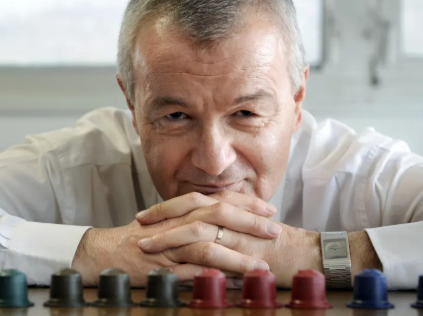Every generation has its own anxieties around coffee.
每一代人都有他们自己的咖啡焦虑。
In the 16th century, the governor of Mecca feared it would encourage his citizens to overthrow him.
在16世纪,麦加的统治者担心咖啡会鼓励他的公民推翻他。
At the dawn of the 17th century, Pope Clement VIII declared it to be “the devil’s drink”.
17世纪初,教皇克莱门特八世宣称它是“魔鬼的饮料”。
Some decades later, in London, women petitioned against coffee houses, claiming it made their husbands impotent.
几十年后,在伦敦,妇女们对咖啡屋提起诉讼,声称它使她们的丈夫阳痿。
These days we are less worried about what coffee does to us, especially with widely available decaffeinated options,
如今,我们不怎么担心咖啡对我们的影响,由其是人们有很多脱咖啡因的选择,
and more worried about what coffee does to the world.
我们更担心咖啡对这个世界的影响。
In the past decade, consumers have grown increasingly concerned about the sheer amount of waste caused by coffee pods.
在过去的十年,消费者越来越担心咖啡胶囊带来的大量废物。
Halo, a firm which makes compostable pods, estimates that of the 39,000 pods made every minute, 29,000 will end up in landfill.
哈罗是一家制造可用作堆肥的咖啡胶囊的公司,他们估计,在每分钟制造的39000个咖啡胶囊中,29000个将会去到废物填埋场。
In 2016, the city of Hamburg introduced a ban on buying coffee pods with council money, as part of a crackdown on “polluting products”.
2016年,汉堡市实施了一项禁止使用议会资金购买咖啡胶囊的禁令,这是一次严厉打击“污染产品”的行动的一部分。
(It did not stop the Nespresso boutique in the city centre from doing a brisk trade.)
(这并没有阻止位于市中心的奈斯派索精品店生意兴隆。)
Nespresso uses aluminium because it is light, strong and durable,
奈斯派索之所以使用铝是因为它轻便、坚固、耐用,
making it the best material for a sealed container that must be flown around the world
这使它成为制造必须空运到世界各地,
and then subjected to extreme heat and pressure on someone’s kitchen counter.
然后在别人的厨房台面上经受高温和高压的密封容器的最佳材料,
Only a tiny amount of coffee is used in each pod,
每个咖啡胶囊只需很少量的咖啡,
so less coffee is wasted than in a cafetiere, or with other methods, in which many grams can be used per cup.
所以,这比使用咖啡壶或者其他方式浪费的咖啡要少,每杯咖啡可以用很多克。
And the pods are, in theory, 100% recyclable.
这些咖啡胶囊理论上是100%可回收的。
But because they contain plastic as well as aluminium, they can’t just be dropped in a regular recycling bin.
但因为它们含有塑料和铝,所以不能直接扔进普通的垃圾桶。

Instead, used capsules must be dropped off at Nespresso boutiques or some convenience stores;
相反,用过的胶囊必须得送到奈斯派索精品店或一些便利店;
in some countries, Nespresso offers a service that collects them from customers’ homes.
在一些国家,奈斯派索还提供从顾客家中收集咖啡胶囊的服务。
Unlike plastic, used by many of Nespresso’s rivals, aluminium is 100% recyclable,
不像奈斯派索的竞争对手所使用的塑料,铝是100%可回收的,
but there is a big difference between offering recycling facilities and getting consumers to use them.
但是,提供回收设施和让消费者使用它们之间有很大的区别。
Nespresso says its global recycling rate is 30%, and that 91% of its users have access to one of its 100,000 collection points around the world.
奈斯派索称其在全球的胶囊回收率为30%,91%的用户可以使用其遍布全球的10万个回收点中的一个。
But some experts have suggested that just 5% of Nespresso pods are recycled.
但是一些专家称,只有5%的咖啡胶囊被回收了。
Even if Nespresso’s figure is accurate, with a conservative estimate of 14bn capsules being sold each year,
即使奈斯派索的数据是准确的,据保守估计,每年咖啡胶囊的销量是140亿,
and 0.9 grams of aluminium per capsule, that means 12,600 tonnes of Nespresso aluminium end up in landfill annually, enough for 60 Statues of Liberty.
每个咖啡胶囊含有0.9克的铝,即每年有12600吨的铝最终会去到废物填埋场,这些铝足够建造60座自由女神像。


